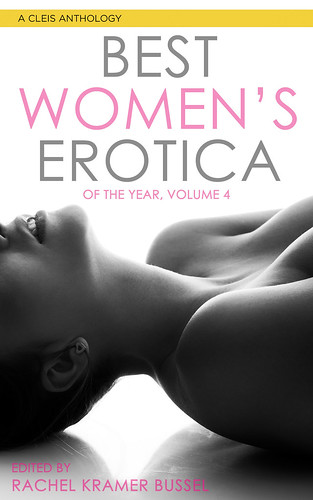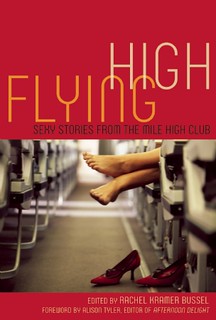Want to read this novel based on artist Tamara de Lempicka: The Last Nude by Ellis Avery
I'm a fan of the work of artist Tamara de Lempicka, so of course I'm interested in the new novel The Last Nude by Ellis Avery. Looking forward to reading it soon.
Official description (side note: I learn about one new thing in HTML each year, and last year it was how to do a block quote, hence this post's formatting):
Paris, 1927. In the heady years before the crash, financiers drape their mistresses in Chanel, while expatriates flock to the avant-garde bookshop Shakespeare and Company. One day in July, a young American named Rafaela Fano gets into the car of a coolly dazzling stranger, the Art Deco painter Tamara de Lempicka.
Struggling to halt a downward slide toward prostitution, Rafaela agrees to model for the artist, a dispossessed Saint Petersburg aristocrat with a murky past. The two become lovers, and Rafaela inspires Tamara's most iconic Jazz Age images, among them her most accomplished-and coveted-works of art. A season as the painter's muse teaches Rafaela some hard lessons: Tamara is a cocktail of raw hunger and glittering artifice. And all the while, their romantic idyll is threatened by history's darkening tide.
Inspired by real events in de Lempicka's history, The Last Nude is a tour de force of historical imagination. Ellis Avery gives the reader a tantalizing window into a lost Paris, an age already vanishing as the inexorable forces of history close in on two tangled lives. Spellbinding and provocative, this is a novel about genius and craft, love and desire, regret and, most of all, hope that can transcend time and circumstance.
An interview with Ellis Avery at the very, very cool site Sheepish Fashionista, if you're into fashion and beauty products and all sorts of interesting intersections between those and literature. To wit, Avery was asked "Who is the best-dressed character you’ve created? How did you come up with and dress them? What does the way you dress them say about them to you?" and she answered, in part:
At the beginning of the novel, which takes place in 1927 Paris, Tamara is the artist and Rafaela is the muse. Over the course of the book, however, Rafaela discovers that she’s an artist too, albeit in the trivialized and demoted art of fashion. Rafaela begins this novel, which is very much a story about coming into one’s own, in a dress that she made by copying a pattern from Chanel, but by the end she has created a new dress from scratch, one that works a zipper into its design: this is an idea Rafaela comes up with on her own, long before she ever encounters a dress with a zipper by Schiaparelli or anyone else. Rafaela’s initial, Chanel-inspired dress is a form-fitting little number made of dazzling teal-blue raw silk, while the zipper dress that ends the book is an A-line piece made of slate-colored gabardine with darker gray piping. Rafaela’s zipper dress is designed to draw as much attention to its own construction as it does to its wearer: this is a novel about learning to depend on one’s art rather than one’s body.
A Yahoo! News interview of Avery (in which she also reveals she had to cute 120 pages!):
Q: You've said you were inspired by the paintings. How did you develop the story and the characters?
A: "I saw her work at the Royal Academy in London in 2004 and came away weak in the knees -- this is so gorgeous -- and the caption said that the young woman in the painting was the 'Beautiful Rafaela' from 1927, that she had met this girl on a walk in the Bois de Bologne and she became her model, and her lover. Their relationship resulted in six paintings, and it seems to have been a brief relationship. Then when I looked at her catalog, the very last painting she was working on when she died was indeed that copy of 'Beautiful Rafaela.' So 53 years later, this girl was still on her mind, which was thrilling to me.
"I got a book of her paintings and cut them out and spread them on the desk. All the paintings from 1925 to 1929, and looked at them for days. I read biographies of de Lempicka by her daughter, by others. I read a lot about her era. But a lot of the work was just looking at the paintings and at the people that she represented, and just trying to enter that world."
Author Emma Donoghue interviews Avery at Amazon:
Donoghue: At what points did you find you had to change a fact in order to make a better fiction?
Avery: First, if Tamara’s apartment and the train station had been on the same side of the Seine, there would have been no need for Rafaela to cross the river on a crucial occasion toward the end of the book. For that reason, although the biographical Tamara--whom I got to know through the excellent work of Laura Claridge--lived in what was at the time the newish-money Sixteenth Arrondissement of Paris, my fictional Tamara lives in the old-money Seventh.
Second, when I finished my first novel, set in 1880s Japan, I promised myself that my next book would be about English speakers. Of course, next thing you know, I’m fired up to write about a Polish painter who grew up speaking French. Partly because the biographical Tamara never specified the biographical Rafaela’s nationality or origins, and largely for my own sake, to avoid writing another book full of translated dialogue, I have taken the liberty of imagining an English-speaking Rafaela.
Labels: Art Deco, Beautiful Rafaela, book covers, Ellis Avery, Emma Donoghue, fiction, Tamara de Lempicka, The Last Nude










 The Big Book of Submission: 69 Kinky Tales
The Big Book of Submission: 69 Kinky Tales

 Flying High: Sexy Stories from the Mile High Club
Flying High: Sexy Stories from the Mile High Club
0 Comments:
Post a Comment
<< Home